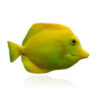Crafting and Shaping Dragons in Chinese Decorative Objects: Symbolism, Techniques, and Cultural Significance

The dragon is one of the most iconic and revered symbols in Chinese culture. It represents power, strength, good fortune, and auspicious energy. Its presence is felt not only in the realms of mythology, literature, and art but also prominently in the design and crafting of decorative objects. The dragon’s shape and image have been transformed and reinterpreted over centuries, finding its place in a wide array of items, from everyday household objects to extravagant ceremonial pieces. This article explores the intricate process of crafting dragons in Chinese decorative objects, examining the symbolic significance, the materials and techniques used, and the role the dragon plays in Chinese culture.
The Dragon as a Cultural Symbol in Chinese Art
In Chinese culture, the dragon is an incredibly powerful and multifaceted symbol. Unlike the terrifying dragons of Western mythology, the Chinese dragon is often seen as a benevolent and auspicious creature, associated with the Emperor, imperial power, and prosperity. It embodies natural elements, such as water, fire, and wind, and is believed to have control over the forces of nature, bringing rain and fertility to the land. The dragon is often depicted as a long, serpentine creature with a mix of animal features, such as the head of a camel, the horns of a deer, the eyes of a rabbit, and the claws of an eagle.
The dragon’s image in Chinese decorative objects serves to invoke these qualities of power and protection, with many items designed to bring good fortune to their owners or to symbolize the power and authority of those who use them. Whether it appears in small trinkets, ornate furniture, or large architectural decorations, the dragon is a central motif in Chinese craftsmanship, representing a connection to ancient traditions and spiritual beliefs.
The Dragon in Chinese Decorative Arts: Materials and Techniques
The creation of dragon-themed decorative objects in China involves a combination of traditional materials and intricate techniques. From jade carvings to ceramics, metalwork, wood carving, and embroidery, dragons are portrayed in various forms across a range of decorative objects. The choice of materials is often dictated by the symbolism associated with each medium, as well as the intended purpose of the object.
1. Jade Carvings
Jade has been a highly prized material in China for thousands of years. Known for its beauty and durability, jade is often associated with immortality, purity, and the divine. The dragon is a frequent motif in jade carvings, with its intricate forms expertly shaped by skilled artisans. These carvings can be found in a variety of objects, such as pendants, ceremonial plaques, and statues.
The carving of dragons in jade requires both precision and patience. Artisans begin with a raw piece of jade and carefully shape it using specialized tools. The dragon’s sinuous body, detailed scales, and powerful claws are all carefully carved to reflect the elegance and strength of this mythical creature. Given jade’s toughness, the process can be lengthy, but the resulting work of art is often regarded as a symbol of nobility, wealth, and status.
2. Porcelain and Ceramics
Another medium where the dragon’s influence is prominent is in Chinese porcelain and ceramics. The blue-and-white porcelain, which originated during the Yuan Dynasty and flourished during the Ming and Qing Dynasties, often features dragons as part of its decorative patterns. These dragons are typically painted onto the porcelain using cobalt blue pigment, creating striking contrast against the white background.
The technique of painting dragons onto porcelain requires a great deal of skill, as the painter must capture the fluidity and dynamic movement of the dragon while adhering to strict traditional aesthetic principles. In Chinese culture, dragons on porcelain vessels are often used for ceremonial purposes, such as on incense burners, tea sets, and other objects designed for the elite. The presence of the dragon on these items is not only decorative but also symbolic of the power and status of the owner.
3. Wood Carving
Wood has also been a popular medium for crafting dragon motifs in Chinese decorative art. Wooden carvings of dragons are common in furniture, such as tables, chairs, and cabinets, as well as in architectural details like doorways, beams, and windows. The technique of carving dragons in wood requires expert craftsmanship, as artisans must bring out the texture and fluidity of the dragon’s body while preserving the natural grain of the wood.
In Chinese furniture design, dragon motifs are often incorporated into the decorative elements of the piece. For example, a cabinet might feature a carved dragon at its center, symbolizing protection and power. Similarly, dragon motifs might be integrated into the arms of a chair or the legs of a table, reinforcing the auspicious and protective qualities of the dragon.
4. Metalwork and Bronze
Metalworking, particularly in bronze, is another traditional technique used to create dragon motifs in decorative objects. Bronze dragons are often cast or sculpted and can be found in items such as incense holders, candle stands, and ceremonial bells. Bronze was historically a symbol of wealth and power, and the presence of the dragon in such items was often used to assert the social status of the owner.
The casting of dragons in bronze is a complex process that requires skill in both mold-making and casting. The dragon’s intricate details—its scales, claws, and flowing mane—are often added after the main form has been cast, either through additional carving or the application of raised patterns. The end result is a piece that combines the sturdiness of metal with the graceful design of the dragon, creating an object that is both functional and symbolic.
5. Embroidery and Textiles
Embroidery is a delicate and intricate art form that has been used in China for centuries. Dragon motifs are commonly seen in Chinese textiles, especially on silk robes, cushions, and ceremonial banners. In imperial China, dragon-embroidered robes were worn by the emperor and his family, with each dragon embroidered onto the fabric representing imperial power.
The process of embroidery is highly labor-intensive, with artisans using silk thread to stitch the dragon’s body, claws, and other features. These embroidered dragons are often done in gold or silver thread, creating a striking contrast with the fabric’s color. The embroidery technique is meant to capture the dragon’s energy and majesty, often featuring stylized designs that emphasize the creature’s power and dynamic movement.
The Symbolism of Dragons in Decorative Objects
The dragon in Chinese decorative objects carries deep symbolic meaning, serving as a reminder of the cultural and spiritual significance of the creature. Some of the primary symbolic meanings associated with the dragon include:
1. Imperial Power and Authority
During imperial China, the dragon was closely associated with the Emperor. It was considered the Emperor’s emblem, representing his supreme authority and the mandate of heaven. The dragon’s association with the Emperor was so strong that the Emperor’s robes were often adorned with dragon motifs. In decorative objects such as ceremonial vessels and imperial furnishings, the presence of the dragon symbolized the Emperor’s rule and his divine right to govern.
2. Good Luck and Prosperity
The dragon is also a symbol of good luck and prosperity in Chinese culture. It is believed to bring good fortune, success, and wealth to those who possess objects bearing the dragon motif. As a result, many Chinese people incorporate dragon motifs into their homes, businesses, and personal belongings, believing that the dragon will protect them and bring them good fortune. Items such as dragon-shaped incense holders, jewelry, and decorative statues are often used for this purpose.
3. Protection from Evil Spirits
In traditional Chinese belief, the dragon is also a powerful protector against evil spirits and negative influences. It is thought to have the power to drive away malevolent forces and provide spiritual protection to the owner of objects adorned with its image. This is why the dragon is frequently incorporated into talismans, amulets, and other protective objects.
4. Harmony with Nature
The dragon is seen as a mediator between the natural and spiritual worlds. It controls the elements of nature, such as water, fire, and wind, and is believed to bring balance to the environment. This connection between the dragon and nature is reflected in the way the dragon is often depicted in Chinese art—its sinuous body flows with the rhythm of the natural world, symbolizing the harmony between mankind and the forces of nature.
Conclusion
The crafting and shaping of dragons in Chinese decorative objects is an art form that reflects the deep cultural, spiritual, and historical significance of the dragon in Chinese society. From jade carvings to porcelain, metalwork, and embroidery, the dragon is a recurring motif that embodies power, protection, prosperity, and harmony. The techniques used to craft these dragon-themed objects are steeped in centuries-old traditions, and the materials selected are symbolic of the dragon’s divine qualities. Whether adorning a piece of furniture, a ceremonial object, or a personal ornament, the dragon continues to play a central role in Chinese decorative arts, reminding people of the ancient wisdom, strength, and good fortune that it represents. Through these objects, the dragon remains an enduring symbol of Chinese heritage and culture, bridging the past with the present and ensuring its continued relevance for generations to come.

